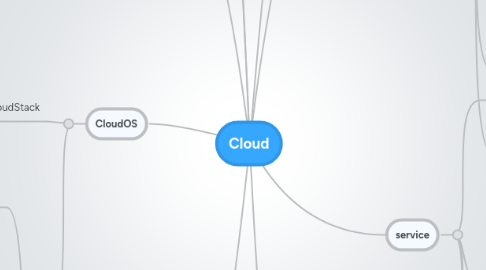
1. CloudOS
1.1. CloudStack
1.1.1. Advanced network mode
1.1.1.1. Network Mode
1.1.1.1.1. Direct Attach
1.1.1.1.2. Tagged VLAN
1.1.1.1.3. Untagged VLAN
1.1.1.2. Service
1.1.1.2.1. Reset password
1.1.1.2.2. Resource dedicate
1.1.1.2.3. Static NAT
1.1.1.2.4. Multi NIC
1.1.1.2.5. LB
1.1.1.2.6. Port forward
1.1.2. Basic network
1.1.2.1. Security group
1.1.2.2. Baremetal provisioning
1.2. OpenStack
2. Network
2.1. L2
2.1.1. VLAN
2.1.2. ARP
2.1.3. Bridge
2.1.4. ebtable
2.1.5. FC
2.2. VPN
2.2.1. SSL VPN
2.2.2. IPSec
2.3. L4
2.3.1. LVS
2.3.2. ICMP
2.3.3. TCP/UDP
2.4. L7
2.4.1. software
2.4.1.1. haproxy
2.4.1.2. heartbeat
2.4.1.3. Web server
2.4.2. SSL
2.5. L3
2.5.1. Routing
2.5.2. iptables
2.5.3. BGP
2.5.4. IP
2.6. Management
2.6.1. ip
2.6.2. route
2.6.3. ifconfig
2.6.4. iptables
2.6.5. ebtable
2.6.6. SR/IOV
2.7. Virtualization
2.7.1. Virtio
2.7.2. SR/IOV
2.7.3. Vhost_net
2.8. Appliance
2.8.1. L2 switch
2.8.2. L3 switch
2.8.3. L3 router
2.8.4. Virtual appliance
2.8.4.1. VPX
2.8.4.2. F5
3. AWS
3.1. Architecture
3.2. Service
3.2.1. Bigquery
3.2.2. Cloudformation
3.2.3. Cloudwatch
3.2.4. EIP
3.2.4.1. Statefull NAT
3.2.4.2. Stateless NAT
3.2.5. ELB
3.2.5.1. Auto scaling
3.2.6. Simple Search
3.2.6.1. Lucene
3.2.6.2. Slor
3.2.6.3. ElasticSearch
3.2.7. S3
3.2.8. VPC
3.2.9. EBS
4. System
4.1. Monitering
4.1.1. Zabbix
4.1.2. Zenoss
4.1.3. RRD
4.1.4. Collected
4.1.5. SNMP
4.1.6. IPMI
4.1.7. iLO
4.2. management
4.2.1. user/group
4.2.2. /proc
4.2.3. IPC
4.2.4. Package
4.2.4.1. YUM
4.2.4.2. APT
4.2.5. SELinux
4.2.6. Runlevel
4.2.7. Service
4.2.8. Kickstart
4.2.9. NTP
5. Devops
5.1. Language
5.1.1. Perl
5.1.2. Shell
5.1.3. Ruby
5.1.3.1. Chef
5.1.3.2. Sinatra
5.1.4. C++
5.1.4.1. BOOST
5.1.4.2. STL
5.1.4.3. CPPUnit
5.1.5. C
6. Automation
6.1. Provisioning
6.1.1. Baremetal
6.1.1.1. PXEBoot
6.1.1.2. TFTP
6.1.1.3. DHCP
6.1.1.4. Kickstart
6.1.1.5. Windows DS
6.1.1.6. Image Copy
6.1.1.7. Live Linux CD
6.1.1.7.1. PING
6.1.1.7.2. Knoppix
6.1.2. VM
6.1.2.1. Volume storage
6.1.2.2. Data storage
6.2. Chef
6.2.1. Install
6.2.1.1. Linux client
6.2.1.2. Linux server
6.2.1.3. Windows client
6.2.2. Role
6.2.3. Knife
6.2.4. Databag
6.2.5. Modeling
6.2.6. resource
6.3. Coodinator
6.3.1. zookeeper
6.3.2. Jenkins
6.3.3. Auto scaling
6.3.3.1. VM auto scaling
6.3.3.2. Network auto scaling
6.4. puppet
7. Hypervisor
7.1. KVM
7.1.1. Qemu
7.1.2. QCOW
7.1.3. Spice
7.1.4. vhost_net
7.1.5. VNC
7.2. Xen
7.2.1. OVM
7.2.2. Xenserver
7.3. Virtualbox
7.4. Manager
7.4.1. Volume migration
7.4.2. Network bridge
7.4.3. TUN/TAP Interface
7.4.4. Libvert
8. Storage
8.1. Object storage
8.1.1. glusterfs
8.1.2. swift
8.2. Virtual appliance
8.2.1. Nexenta
8.2.1.1. Opensolaris
8.2.1.2. NMS
8.2.1.3. NMV
8.2.1.4. ZFS
8.2.1.5. NMC
8.3. Interface
8.3.1. SAS
8.3.2. SCSI
8.3.3. FC
8.3.4. iSCSI
8.3.5. NAS
8.4. File system
8.4.1. LVM
8.4.2. ZFS
8.4.3. Btrfs
8.4.4. Ext4
9. service
9.1. Network
9.1.1. Elastic IP
9.1.2. VPC
9.1.3. ELB
9.1.4. NAT
9.1.4.1. Stateless
9.1.4.2. Stateful
9.1.4.3. Clustered NAT
9.1.5. Portforwarding
9.1.6. GSLB
9.2. Storage
9.2.1. Data volume
9.2.1.1. snapshot
9.2.1.2. backup
9.2.2. Object volume
9.3. VM
9.3.1. Migration
9.3.2. VtoP
9.3.3. HA
9.4. Volume
9.4.1. Snapshot
9.4.2. Backup
9.4.3. Migration
